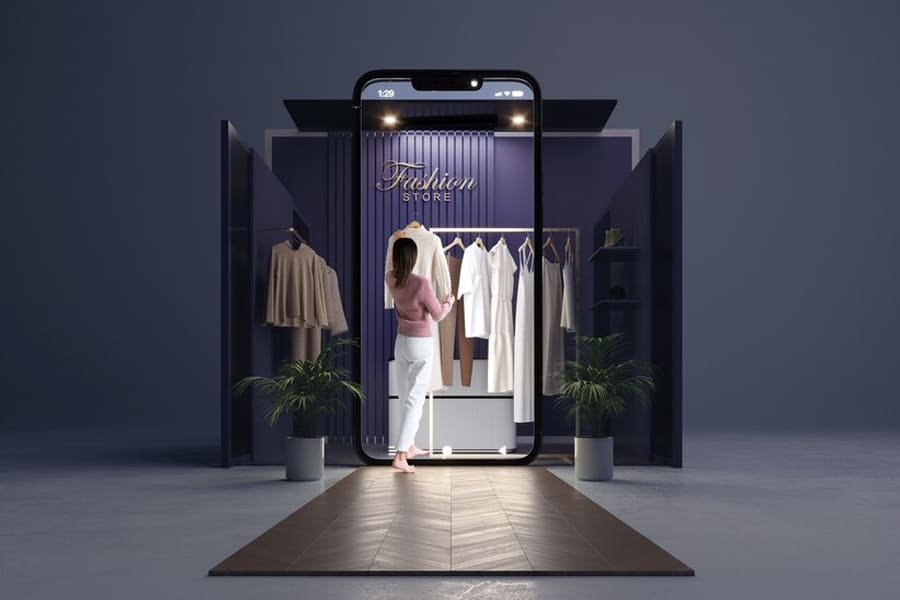
You’ve heard many horror stories about people’s horrible online purchases. Customers buy glasses online, believing them to be the perfect pair, but the new pair doesn’t look great with their face shape.
Expectations versus reality, right? And somehow, reality always fails consumers.
Virtual try-on technology promises to change that.
What is a virtual try-on tool, and how will it help your customers? Let’s examine this exciting new technology that you can use to boost your online sales, minimize returns, and make your online shop the next budol central of the country.
The Rise of Virtual Try-On Technology in Retail
Virtual try-on (VTO) solutions have become a transformative force in online retail.
One of the first retail brands to use virtual try-ons was Converse back in 2012 — they made an app that let buyers see what their shoes would look like on them. Unrelated to the fashion sphere, Pokemon GO launched in 2016, reaching a peak of 45 million users and becoming a cultural phenomenon.
In the shadow of these two successes, other big-name brands like Nike, Gap, and more followed soon after. But what pushed virtual try-on technology to the limelight was the pandemic.
The lockdowns forced thousands of businesses to close. Those that could remain open scrambled for a new product-selling method. Confined to their homes, consumers sought more immersive and risk-free online shopping experiences.
It’s more than just a pandemic trend, though. Major players like Amazon, Ray-Ban, Adidas, and even IKEA have recognized the transformative power of this technology.
In the Philippines, progressive brands like L’Oreal and Lazada have embraced virtual try-on technology, pioneering a new era of interactive and personalized online shopping experiences for Filipino consumers.
Beyond mere technological trends, this augmented reality (AR) technology can potentially revolutionize online shopping.
Understanding Virtual Try-On: Definition and Functionality
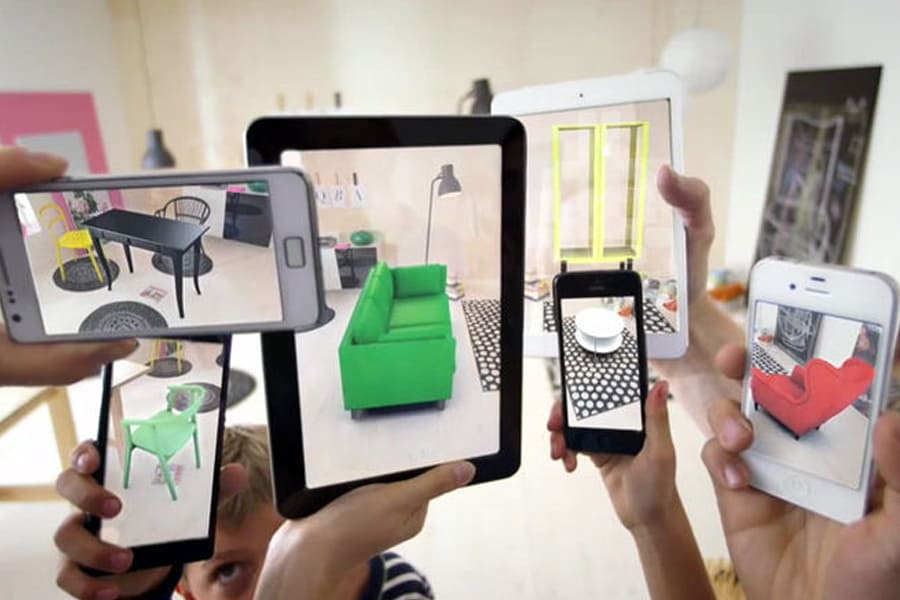
Virtual try-on technology is a visual and AI-augmented technology that lets online shoppers experience products before buying. Most technologies visually represent the customer’s face through a 3D selfie (typically through a phone camera), then superimpose digital product representations to that photo.
VTO allows customers to virtually try on anything when integrated into an online shop.
For example, customers can fit as many pairs of glasses, contact lenses, and sunglasses as possible. They can check dress fits without the hassle of going shopping or even hairstyles without committing.
But its applications go beyond apparel and fashion.
For example, this VTO is also leveraged in the beauty sector, allowing users to test cosmetics, hairstyles, and more virtually. All they have to do is take a selfie or record a video.
It lets customers visualize what an IKEA couch will look like in their living room. It allows potential buyers to decide how an art piece will look in their bedroom.
It’s an innovative technology that promises to bridge the gap between the digital and physical shopping experience. Let’s look more into their concrete benefits in the next section.
Benefits of Virtual Try-On for Retailers and Customers
The potential of virtual try-on technology can revolutionize how businesses engage with their customers in the online marketplace, but how exactly will this look?
This virtual solution offers a lot of benefits:
- Drastically reduces return rates. Business owners can decrease product returns by allowing customers to try items before purchasing, saving time and resources.
- Enhances customer engagement and confidence. Retailers can build stronger connections with their audience by offering an immersive online shopping journey beyond traditional e-commerce limitations.
- Allows data-driven insights. Virtual try-on platforms generate valuable data on customer preferences and behavior that retailers can use to refine their products, tailor marketing strategies, and stay ahead of evolving consumer trends.
But its benefits are not just limited to e-commerce website owners and retailers.
It also offers a lot to the typical consumers, such as the following:
- Improves purchase confidence. Seeing exactly how their purchase will fit them assures customers and reduces their apprehension about online shopping.
- Gives them more time and convenience. This technology makes an ultra-convenient and informed shopping experience accessible from the comfort of their own homes.
It also offers a hyper-personalized shopping experience. Customers can visualize how products will fit into their specific lives, forging a sense of connection with the products they buy.
Types of Virtual Try-On Solutions
Understanding this technology is key to leveraging its potential for your business, so knowing what types of VTO technology business owners can get in the market is essential.
Augmented Reality (AR)
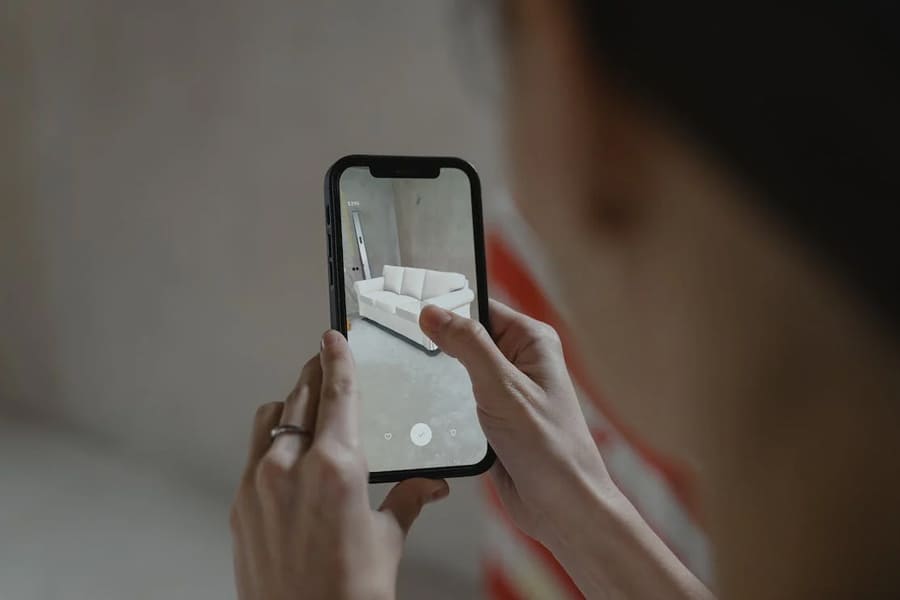
The AR-type overlays digital elements in a real-world environment.
It enhances the real world by allowing customers to see how products would look on them by superimposing digital images or animations onto their camera feed. An example of this would be Ikea’s AR home planning tool.
AR is highly accessible through smartphones and tablets. Although the experience may be device-dependent, realistic integration with varying lighting conditions can be challenging.
Virtual Reality (VR)
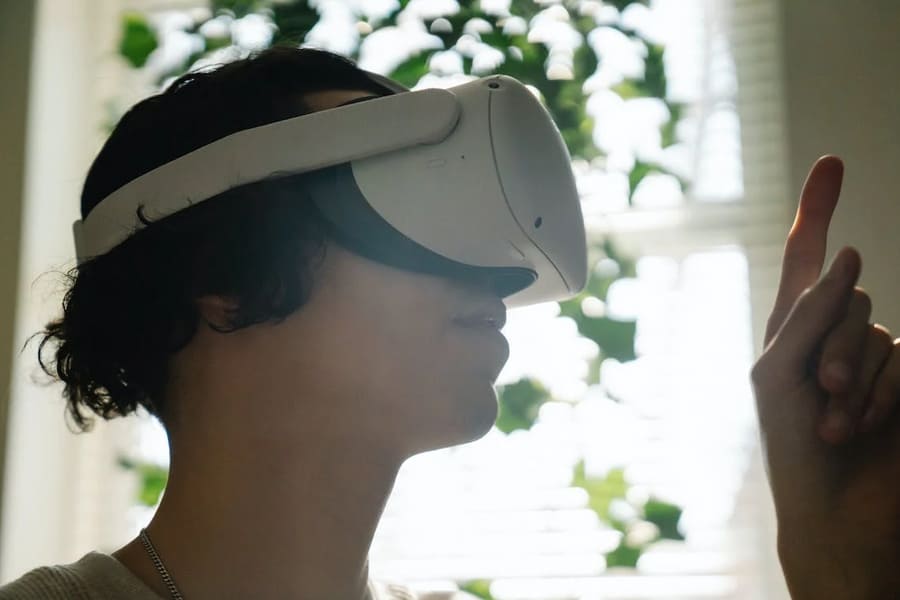
On the other hand, VR immerses users in an entirely digital environment with amazing realism.
In the context of VTO technology, VR would involve fully immersive simulations of products, like clothing or makeup, that users can explore and interact within a virtual environment.
This type offers an unparalleled immersive experience, though it requires specialized hardware that limits accessibility for most customers. Thus, they’re not often used for retail.
Implementing Virtual Try-On: Integration and Infrastructure
Simply put, implementing VTO involves two phases: integration and digitization.
Business owners need to strategically integrate VTO into their existing e-commerce platforms through collaboration with specialized providers or by opting for platforms with built-in capabilities.
At the same time, a meticulous process of product digitization will be done to create accurate 3D models for the virtual try-on experience.
Once you have integrated your platforms and digitized models of your products, your customers can access a virtual try-on shopping experience for your brand.
Enhancing the Customer Experience: Personalization and Engagement
One of the main benefits of this technology is how it improves business-to-consumer relationships by improving personalization and encouraging engagement.
Let’s see how you can use this technology for each specific purpose.
Customer Personalization
Customer personalization is crucial for retail businesses. In today’s option-rich market, it’s something that consumers expect from brands.
Personalization also allows a brand development to differentiate itself from competitors and meet customer expectations. Virtual try-on experiences enhance personalization by providing an immersive and tailored shopping experience.
Through detailed analysis of customer preferences and behavior data, you can curate personalized product recommendations, improve customer-product match, and create a truly bespoke shopping experience.
Customer Engagement
This factor is crucial for retail businesses as it helps in customer retention. This, in turn, leads to increased customer satisfaction, loyalty, sales, and other significant benefits. In such a competitive industry as B2C, this is what keeps your brand afloat.
The interactive nature of VTO technology leads to better customer engagement. As users explore and virtually try on products, they actively participate in the shopping journey. Real-time adjustments, color variation, and style combinations empower customers to engage with your brand entirely.
The cutting-edge nature of this technology also allows for more avenues of customer engagement through social media.
For example, in the previously cited strategy by Converse, they encouraged their audience to take pictures of their virtual try-ons, post them on social media, share them with their friends, and save the photos in their galleries so they don’t forget their items when finally buying.
In the Philippines, Lazada even lets you virtually consult an AI makeup artist for assistance testing cosmetic swatches on your skin and seeing how it looks.
Improving Conversion Rates and Reducing Returns with Virtual Try-On
VTO is a game changer when boosting conversion rates and curbing returns by allowing unparalleled levels of customer information in the buying process.
Here are examples of how you can use this technology:
- Visual confidence building. Allow customers to virtually try on products, visually boosting confidence and bridging the online-in-store gap.
- Customized recommendations. Leverage platform insights to provide personalized product recommendations, guiding customers to tailored choices.
- Real-time adjustments. Enable real-time adjustments during virtual try-ons, empowering users to customize products to their preferences.
- Color and style variations. Showcase product variations in color and style through VTO, helping customers discover the exact products that match their tastes.
- Size accuracy assurance. Ensure accurate sizing by letting customers see how their choices match their styles, reducing the chances of returns due to size discrepancies.
By actively implementing these strategies, brands can harness the incredible potential of this modern technology.
Virtual Try-On for Fashion and Apparel
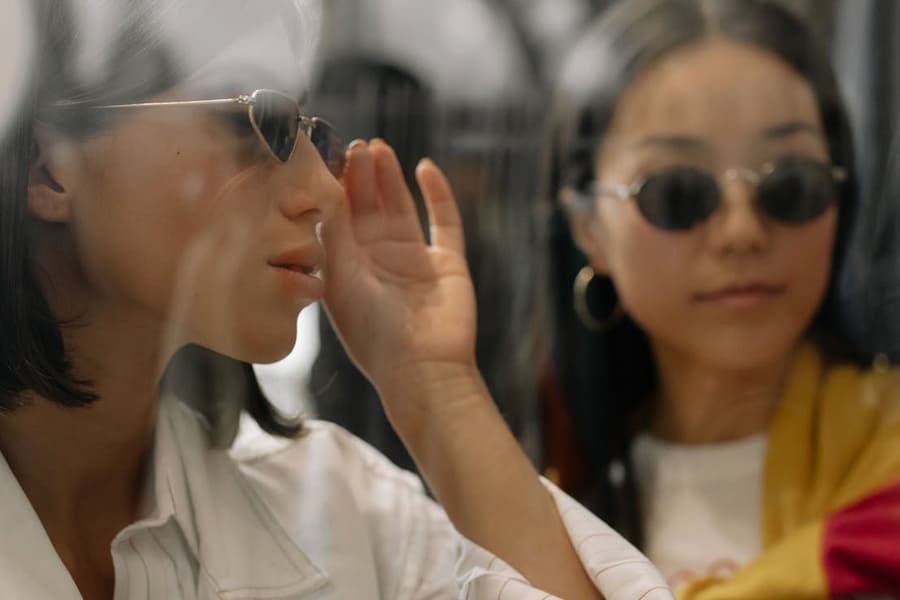
Now that we’ve examined the benefits, let’s look at specific use cases of this technology.
Clothing
Fitting clothing online has long been a challenge. So many sizing variations and individual preferences occur among different consumer groups, contributing to high return rates.
VTO technology addresses this by allowing users to virtually try on garments, offering a realistic preview of how they will look and fit.
Wacoal, a well-known lingerie brand, has effectively utilized VTO tech to address its audience’s pain points and enhance customer experience. The brand’s virtual try-on app scans the consumer’s body to provide bra sizing advice, focusing on seamless integration and personalized assistance.
Accessories
Before VTO, there was no guarantee that the items would look good on your face in real life. This applies to other accessories, such as jewelry, watches, etc., especially as the price goes up.
VTO technology addresses this issue by showing users how accessories will fit them first.
With this technology, brands like Ray-Ban empower customers to see how pairs of new glasses suit their specific appearance, letting customers try many different Ray-Ban frames through a selfie or a short video.
Footwear
Finding the right fit and comfort for footwear online is a challenge that many can relate to. With the wide range of foot shapes and dimensions and the equally mind-boggling number of shoe choices, buying footwear online often devolves into expensive trial and error.
But with a virtual try-on application like Nike’s, it doesn’t have to. Nike used VTO technology for their footwear products, enabling customers to visualize how the shoes would look on their feet.
Another AR app called Nike Fit is the perfect complement to this technology. It gathers specific data points of a customer’s feet and then uses AR to recommend the ideal shoe dimensions for comfortable wearing.
Virtual Try-On for Beauty and Cosmetics

Let’s examine mini case studies of how VTO technology solves long standing problems in this industry.
Makeup
Predicting how makeup will look on one’s skin has been a longstanding problem of the makeup secretary, especially when buying online.
Virtual Try-On (VTO) addresses this issue by allowing users to apply makeup in real-time virtually.
Sephora, for example, offers the Sephora Virtual Artist for thousands of cosmetic products. With this AR technology, customers can see how thousands of different foundations, lipstick, eyelash extensions, and more look precisely on their skin tone and facial frame.
Hairstyles
Buying hair products online, especially for coloring, is challenging without knowing how the color will look. Hairstyles are heavy on people’s minds — there is a lot of psychology behind it, especially for specific cultures like the Philippines.
VTO resolves this by allowing users to experiment with thousands of hairstyles, colors, and accessories without the heavy commitment that a trip to the parlor requires. All customers need is a picture of their hair or head.
L’Oréal Paris integrates VTO to solve this, letting users see how different hair shades look on them.
Skincare
Skincare has become an extensively sensitive issue among people. With the wide array of products available for different skin types and issues, people hesitate to buy them online.
However, consulting their dermatologist before every purchase is impractical, as every visit will likely cost a lot of time and money. Companies are innovatively using VTO to solve this issue.
AI and AR-powered tech platforms such as PerfectCorp and Banuba have launched incredible, ground-breaking virtual skincare diagnostic tools that let customers upload a picture of their face and get a diagnostic and product recommendation for their specific skin types.
Overcoming Challenges in Virtual Try-On Implementation
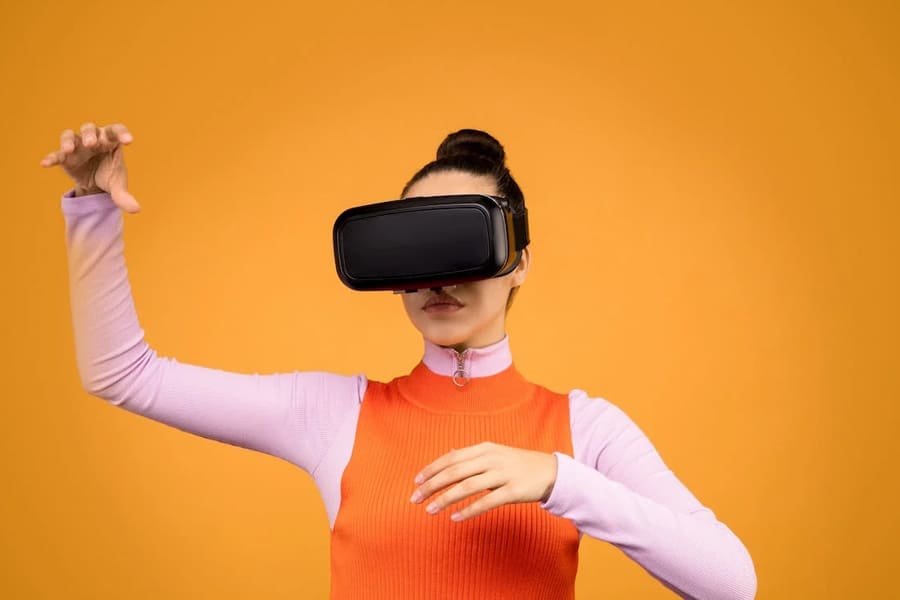
This new technology is exciting. Many business owners are finding a way to solve pervasive industry problems with it — and reaping the benefits.
However, virtual try-on technology has its challenges. Understanding the challenges in VTO implementation is crucial for anyone wanting to wield this transformative technology for their businesses.
Here are a few you should know:
- Prohibitive cost of implementation. The initial investment in VTO technology can be a barrier. Modular implementation and scalable solutions allow businesses to adopt VTO gradually, minimizing upfront costs.
- Realistic rendering difficulties. Poor product rendering can hurt sales instead of boosting them. Advanced algorithms, high-quality 3D modeling, and the rise of AI are being employed to enhance the visual fidelity and accuracy of virtual try-ons.
- Integration complexity. Integrating VTO into existing e-commerce platforms is complicated, but strong collaboration with VTO service providers is remedying this. It’s only a matter of time before you can integrate VTO into your site with a few clicks.
- Data security concerns. Managing customer data privacy and security is paramount. Implementing robust encryption protocols and ensuring compliance with data protection regulations address these concerns.
Last but not least, overcoming the tactile requirement. Despite the emergence of emergent technologies like VTO, customers still prefer to use all their five senses when buying.
In the Philippines, for example, many people still prefer to shop in person. Shifting cultures and buyer attitudes can overcome this issue, though VTO implementation must educate potential customers about exclusive benefits like real-time feature changes.
Final Thoughts
Virtual try-on technology promises to revolutionize online shopping as we know it.
With powerful features that give customers unprecedented personalization, engagement, and buyer information, it’s a technology shaping up to be part of the future. Through VTO, your customers can see how products will fit, how makeup and hairstyles will change their appearance, and even receive personal dermatological diagnostics.It’s not without its challenges, but the potential is there. Early adopters with good implementation can conquer their specific markets while the rest scramble to catch up. You may only have a short window to capitalize on this opportunity.
Frequently Asked Questions
What is virtual try-on technology?
VTO utilizes advanced algorithms and realistic augmented reality (AR) rendering techniques to accurately represent how products will appear in real life.
Is virtual try-on safe?
Security is a top priority for most leading VTO platforms. They implement robust encryption protocols and adhere to data protection regulations to safeguard user privacy.
Is virtual try-on accurate?
Virtual Try-On technology strives for accuracy by providing a reliable digital representation of how products will look in real life, considering factors such as size, color, and fit. Perfection isn’t always guaranteed, but continual advancements in VTO technology aim for the best.